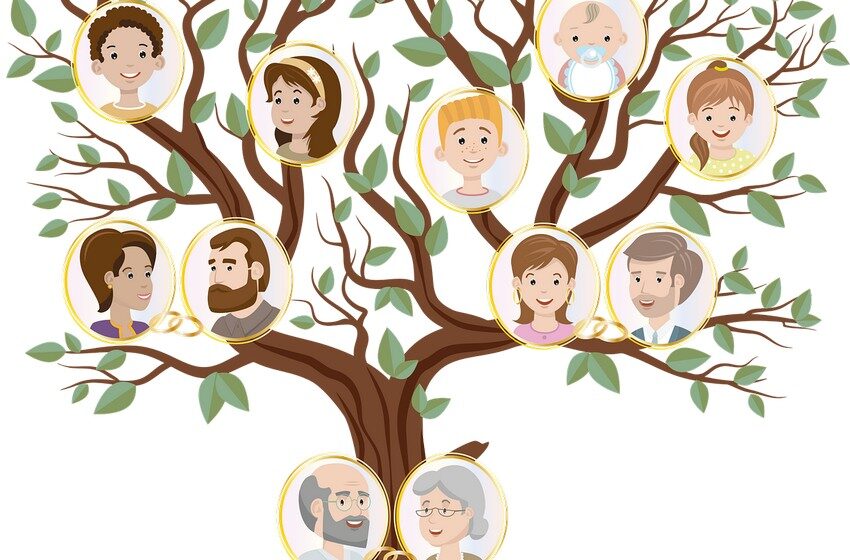
Genealogical tree: what it is and how it is made
A genealogical or family tree is a visual scheme that describes all the family ties within one family, dynasty or clan. Most often the scheme is really depicted in the form of a tree, with the ancestor of the dynasty (less often the last descendant) depicted at the roots, and the various branches (lines) of the family depicted on the branches.
The scheme of the family tree includes:
- The tree is the most ancient symbol of Life. The image of the family tree reflects the connection of three generations from the past, present and future.
- Usually the roots of the tree represent the ancestors, the oldest members of the family.
- The trunk symbolizes the present, the people now living.
- The branches, crown, and leaves represent the future of the family and the continuation of the lineage.
Usually the depth of branching of such a tree covers several generations at once. In this case, the information that is indicated on the scheme or tree can be different:
If all direct descendants of one particular person are indicated on the tree, the schema will be highly branched with a large number of relatives on the outer levels.
Only the researcher’s known ancestors are entered into the schema. Side branches in such a tree are usually cut off in order to present the information in a more compact format.
There are also trees that cover only members of a family with a particular surname (for example, all men of the family). Married descendants in the female line are removed from such a scheme.
There are several varieties of schemes that are most often used to visually represent a family tree.
Horizontal family tree
This type of tree can be quite often found in European family archives. In such a tree, the ancestors are depicted on the left, and the branches go in a horizontal direction. In addition to direct ancestors and descendants, this sometimes includes other relatives by blood, in which case the scheme will be called mixed.
The vertical family tree: the top-down scheme
In this type of tree at the head of the scheme is located the ancestor of the dynasty or family, and descendants are distributed to the branches and go down to the roots. It is possible and to locate the ancestor at roots of a tree while descendants in this case will rise on branches from roots of a tree.
In this version of the scheme, there are no descendants in the female line (daughters, granddaughters, spouse’s ancestors). The tree is compiled only on the basis of data on the descendants in the male line, since a woman can get married and change her last name, which will lead to the “rupture of the family tree”.
The vertical genealogical tree: the ascending schema
The ascending scheme assumes that a child will be at the head of the tree, from which two branches will diverge – the father and the mother. From each of the parents there will be two more branches (their parents, i.e. grandparents of the child), etc. This tree format makes it possible to combine the direct ancestors of one particular person.
Circular family tree scheme
An atypical family tree scheme. It is often also compared to a bird, as its right wing includes the mother’s ancestors, and the left wing includes the father’s ancestors. The child is placed in the center of such a circle.
Usually, the circle is drawn quite large, so that the first circle can fit inside the second one. The second circle is divided in half: the mother’s name is written on one half and the father’s name on the other half. Next, a third outer circle is drawn, which is divided into four parts. Grandparents’ names are written in these parts, etc.


